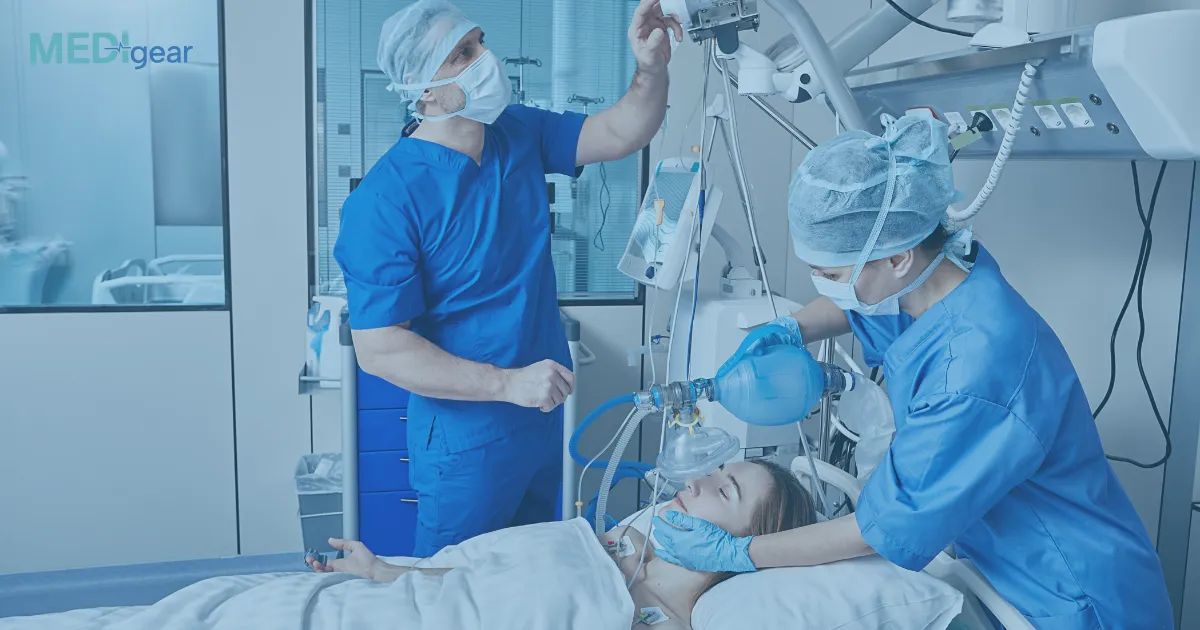When a patient experiences cardiac arrest or respiratory failure, the rapid restoration of breathing and circulation is critical. Resuscitation devices are essential tools in such emergencies, enabling healthcare providers to deliver life-saving ventilation. These devices generally fall into two main categories — manual resuscitation devices and powered resuscitation devices.
While both serve the same fundamental purpose, they differ in operation, precision, and application. Understanding these distinctions helps clinicians choose the most effective tool for each scenario.
1. Manual Resuscitation Devices
Manual resuscitation devices, commonly known as bag-valve masks (BVMs) or Ambu bags, are hand-operated devices designed to deliver positive-pressure ventilation to patients who are not breathing adequately.
They consist of a self-inflating bag, a one-way valve, and a face mask that fits securely over the patient’s mouth and nose. When the bag is squeezed, air or oxygen is forced into the lungs; when released, it automatically refills with ambient air or oxygen from a connected source.
Key Characteristics
Manual devices are lightweight, compact, and do not require electricity or gas pressure. This makes them ideal for emergency use in pre-hospital environments such as ambulances, clinics, and field settings.
Advantages
- Highly portable and easy to deploy
- No power or gas supply required
- Low cost and minimal maintenance needs
- Effective for short-term ventilation during resuscitation
Limitations
- Dependent on operator skill and endurance
- Inconsistent tidal volume delivery due to manual control
- No built-in pressure monitoring
- Risk of lung injury or gastric insufflation if overinflated
Manual resuscitators are best suited for immediate, short-duration ventilation in emergencies where power sources or advanced equipment are unavailable.
2. Powered Resuscitation Devices
Powered resuscitation devices, also referred to as automatic or mechanical resuscitators, are powered by either compressed gas or electricity. They automate the ventilation process, delivering consistent and controlled breaths to the patient.
Unlike manual devices, powered systems feature pressure regulators, rate controls, and alarms that allow clinicians to fine-tune ventilation parameters according to patient needs. They are commonly used in ambulances, operating rooms, and intensive care transport.
Key Characteristics
Powered devices are equipped with controls for inspiratory pressure, respiratory rate, and inspiratory time. Many models also include PEEP (Positive End-Expiratory Pressure) settings to prevent alveolar collapse and maintain adequate oxygenation.
Advantages
- Consistent and precise ventilation delivery
- Adjustable settings for patient safety
- Reduced operator fatigue during prolonged use
- Built-in pressure relief and alarm systems
- Suitable for long-term or transport ventilation
Limitations
- Requires an external power source or oxygen supply
- Higher cost compared to manual devices
- Bulkier and less portable
- Needs regular calibration and servicing
Powered resuscitators are preferred for controlled, continuous ventilation and during patient transport where consistent respiratory support is essential.
3. Major Differences
While both types of devices serve to ventilate patients in emergencies, their key differences lie in operation and functionality.
Operation: Manual resuscitators are hand-operated, while powered devices function automatically using compressed gas or electricity.
Consistency: Manual devices rely on the operator’s rhythm and strength, which can vary; powered devices deliver uniform tidal volumes and pressures.
Monitoring: Manual devices offer little feedback, whereas powered resuscitators feature integrated pressure gauges and alarms.
Training Requirements: Manual devices require basic resuscitation training, while powered devices demand more technical familiarity.
Portability and Cost: Manual devices are lightweight and inexpensive; powered systems are more sophisticated and costlier.
4. Clinical Use and Scenarios
Manual resuscitation devices are ideal for:
- Emergency response and field resuscitation
- Basic Life Support (BLS) and Advanced Cardiac Life Support (ACLS)
- Neonatal and pediatric care (with appropriately sized bags)
- Short-term ventilation during CPR or anesthesia induction
Powered resuscitation devices are suited for:
- Ambulance or air transport requiring consistent ventilation
- Critical care environments where monitoring is essential
- Operating rooms during anesthetic management
- Patients needing longer-duration respiratory support
5. Safety and Performance Considerations
The choice between manual and powered resuscitation depends on clinical setting, patient condition, and available resources.
Manual devices excel in immediate response situations where speed and portability are vital. Powered resuscitators provide controlled precision where long-term or monitored ventilation is required.
Regular inspection, sterilization, and user training are essential for safe operation. Over time, the integration of feedback sensors, smart monitoring, and digital interfaces has enhanced safety in both categories.
6. The Future of Resuscitation Devices
Advancements in resuscitation technology are leading toward hybrid systems that combine manual control with powered support. These next-generation devices integrate real-time feedback displays, AI-driven pressure control, and automated oxygen titration.
Such innovations aim to reduce human error, improve patient safety, and extend usability in both hospital and field environments. As emergency medicine becomes more data-driven, connected resuscitation devices will continue to evolve as essential tools in critical care.
Conclusion
Both manual and powered resuscitation devices play indispensable roles in modern emergency medicine.
Manual resuscitators offer simplicity, mobility, and immediate response capability. Powered systems provide precision, consistency, and automation for extended or monitored use. The decision between them ultimately depends on the clinical environment, patient condition, and resource availability.
Together, these devices represent the foundation of effective respiratory resuscitation — saving lives through technology and timely intervention.
Disclaimer:
This blog is for educational purposes only and should not replace professional medical training or advice. Always follow institutional guidelines and manufacturer instructions when operating resuscitation equipment.






